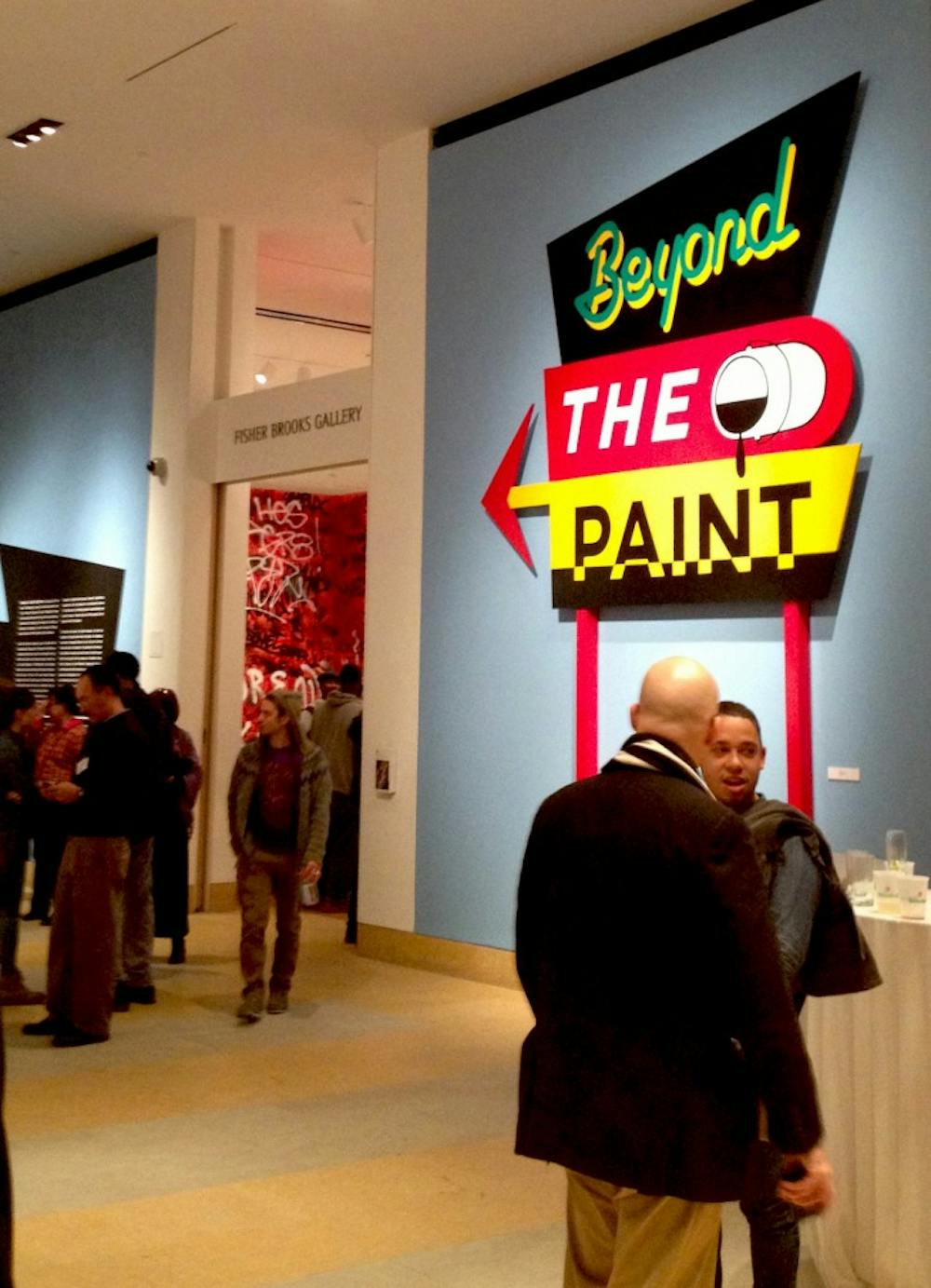[media-credit name="photo courtesy of Darin Rowland (at darinrowland.com)" align="alignright" width="216"][/media-credit]
In celebration of the Mural Arts Program’s 30th anniversary, the Philadelphia Academy of the Fine Arts welcomes a historical exhibition on mural arts in the city. The show incorporates a few pieces of original artwork alongside descriptions of murals past. What’s more, it features an interactive space where Philadelphia mural artists are invited to work during museum hours and teach the public about the different stages of planning when preparing a mural. Events include PhillyRising Workshop on March 16th, where expert staff will facilitate a conversation on neighborhood problems and solutions, as well as several film screenings.
There are obvious difficulties with curating an exhibition on Philadelphia’s murals—principally that, by nature, murals are immovable. For the most part, the exhibition features photographs of famous Philadelphia murals, and a couple examples of original art. Mural artist Ernel Martinez has contributed a paper–mache dining room set (complete with cups and plates) as a part of his “A Place to Call Home” series. Additionally, Philadelphia graffiti artists have sprayed the walls of the gallery as part of a collaborative installation piece.
Because they couldn’t bring the murals to the gallery, PAFA instead settled on making the exhibition more of a historical walkthrough of the landscape of murals in the city. The walls are edged with timelines and maps of the city, and instead of showing you the art itself, they tell you where to go to find it. PAFA is a notorious school field trip destination, and the literature about the exhibition reinforces that reputation. Including activities for kids throughout the show, the wall text is less informative about the art than I would have liked (e.g. “Mural Arts often explores themes of identity in its work—of individuals, communities, neighborhoods and the city”).
There is nothing wrong with educating the people of Philly about their unique identity in the art world, but what’s great about murals is the fact that they are not in museums. They interact with a place, a neighborhood, a people. Sometimes the colors fade and the walls get dirty, but murals are a part of the landscape of urban life, and that’s what makes them special.







